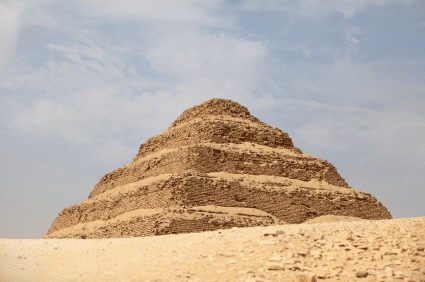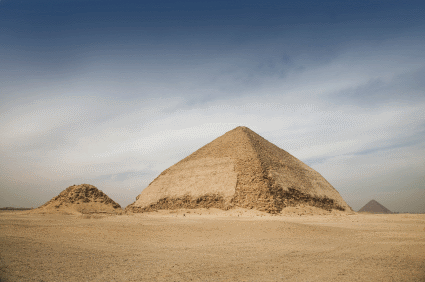|
Discover the Making of the Egyptian Pyramids
Looking at the Egyptian pyramids made me conclude that they are the best landmarks in the world! These structures cemented the names of the ancient Egyptians through the pages of history. Here, piece by piece, I will discuss on how these pyramids evolved from simple tombs to a world icon! Imhotep's InnovationAt the early ages, the Egyptians relied on a structure called mastaba, to house their pharaoh for his afterlife journey. To help you understand how a mastaba looks like, just picture a huge box made of stone! However, Imhotep decided to go beyond the norm. After brainstorming a few ideas, he decided to go up! Imhotep, the vizier of Djoser, designed the first pyramid of ancient Egypt! He starts the pyramid building by stacking mastabas on each the other reaching the sky. As the mastabas go up, the smaller they get. On the day of completion, it contained 6 steps of mastabas forming the Step Pyramid found Saqqara, Egypt. Even if Djoser or Imhotep took the first initiative, Snefru pushed to develop a true pyramid.
The Step Pyramid of Djoser Failure is SuccessSnefru aimed to perfect the Egyptian pyramids and decided to revolutionize pyramid building. He did this by involving himself to 3 Egyptian Pyramids! He endured a lot of failures before he finally succeeded in building one. His first task was to improve the pyramid at Meidum. Originally, it is a step pyramid similar to the pyramid of Djoser. He ordered his men to fill the steps of the pyramid with limestone casing, forming a true pyramid-shaped structure. Later, this structure collapsed because the added stone where not part of the original structure. Not satisfied with the results at Meidum, Snefru build another pyramid. He wants ancient Egypt to have pyramids that can stand the test of time. He wants to leave a special place in the history pages of Egypt. On his next attempt, he met another failure. While the Bent Pyramid seemed normal in the first phase of construction, the structure showed lack of stability. It showed signs of collapse because of the steep incline of the pyramid. To prevent disaster, they continued in a 43 degree angle, shallow to the original 55 degree angle of the initial design.
The Bent Pyramid of Snefru I can picture Snefru pulling his hair out of frustration. His previous attempts has placed a huge dent on the economy of Ancient Egypt. But his ego did not stop him to get the pyramid right. Finally, Snefru succeeded in building a true pyramid. Armed with his past mistakes, the red pyramid, found 1 kilometer north of the Bent Pyramid, succeeds in fulfilling Snefru's goal of creating his dream pyramid. But the legacy he left to Egypt lived short. His son, Khufu, created the largest pyramid ever seen on Egypt. The Pinnacle of Pyramid BuildingThe Pyramid of Khufu, found at Giza, outlasted the other wonders of the ancient world! With 20 years of work at its arsenal, it portrays power and grandeur of Egypt that enchanted many travelers through the ages. This jaw dropping feat defined what Egypt is known for, whether in ancient or modern times! Khafre decided to follow the footsteps of Khufu. He decided to build a pyramid smaller from Khufu but made the first complex mortuary temple that included five elements. Continuing the trend, Menkaure build the last of the great pyramids of Giza. Even though smaller, its mortuary temple defined much more elegance than its predecessors. His untimely death caused workers to abandon the project, leaving us with disappointments. The End of the Age of PyramidsOver time, few Egyptian pyramids built, dropped in quality and size. That marked the end of pyramid building. The decline of it seemed to be inspired by the waning central power and authority in Egypt. In addition, gathering resources for a huge project like this can take its toll to the economy. They decided to concentrate on mortuary temples and less on the pyramids to save their budget. The Egyptians also considered other options such burying their pharaohs in the Valley of the Kings. Return To... Return from Egyptian Pyramids to Home Page
|

